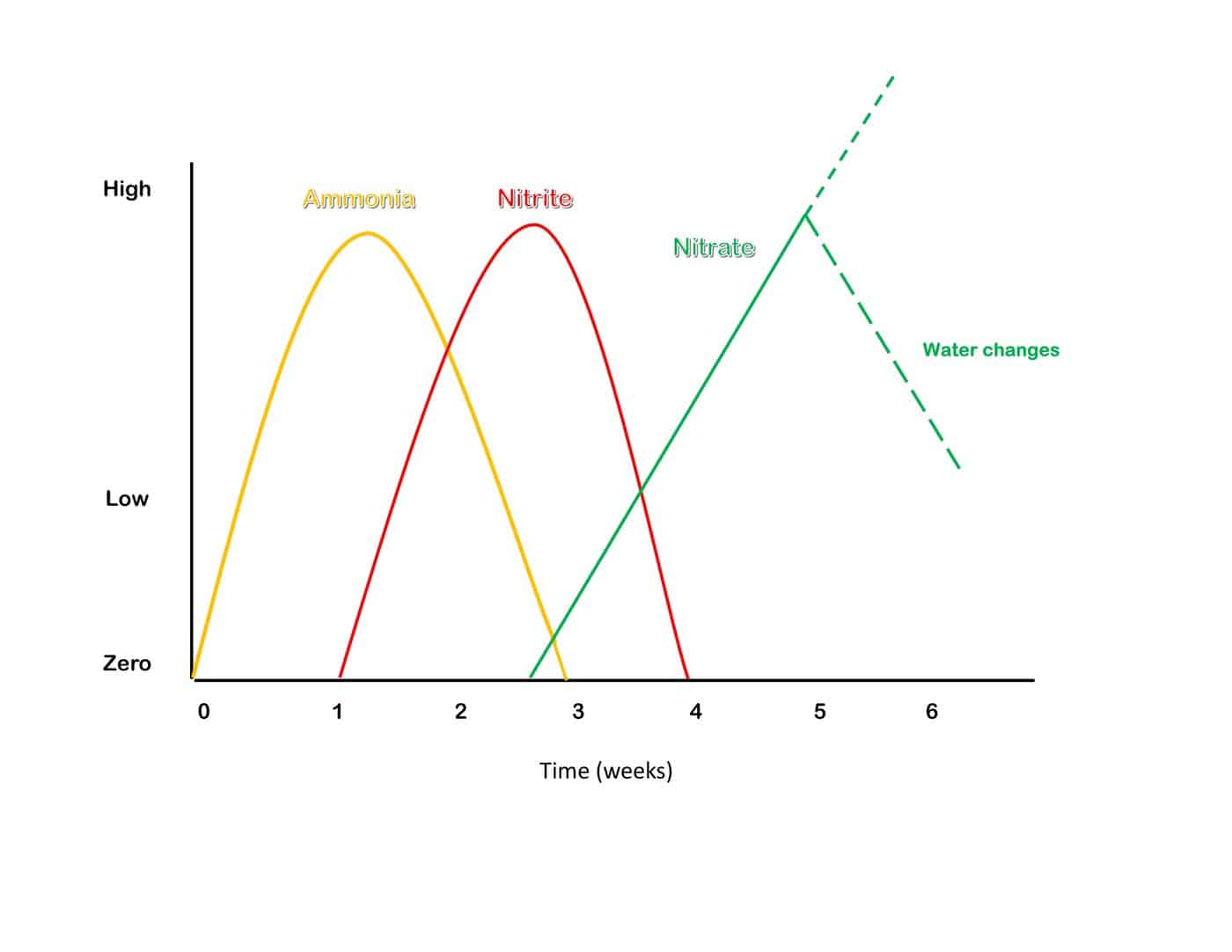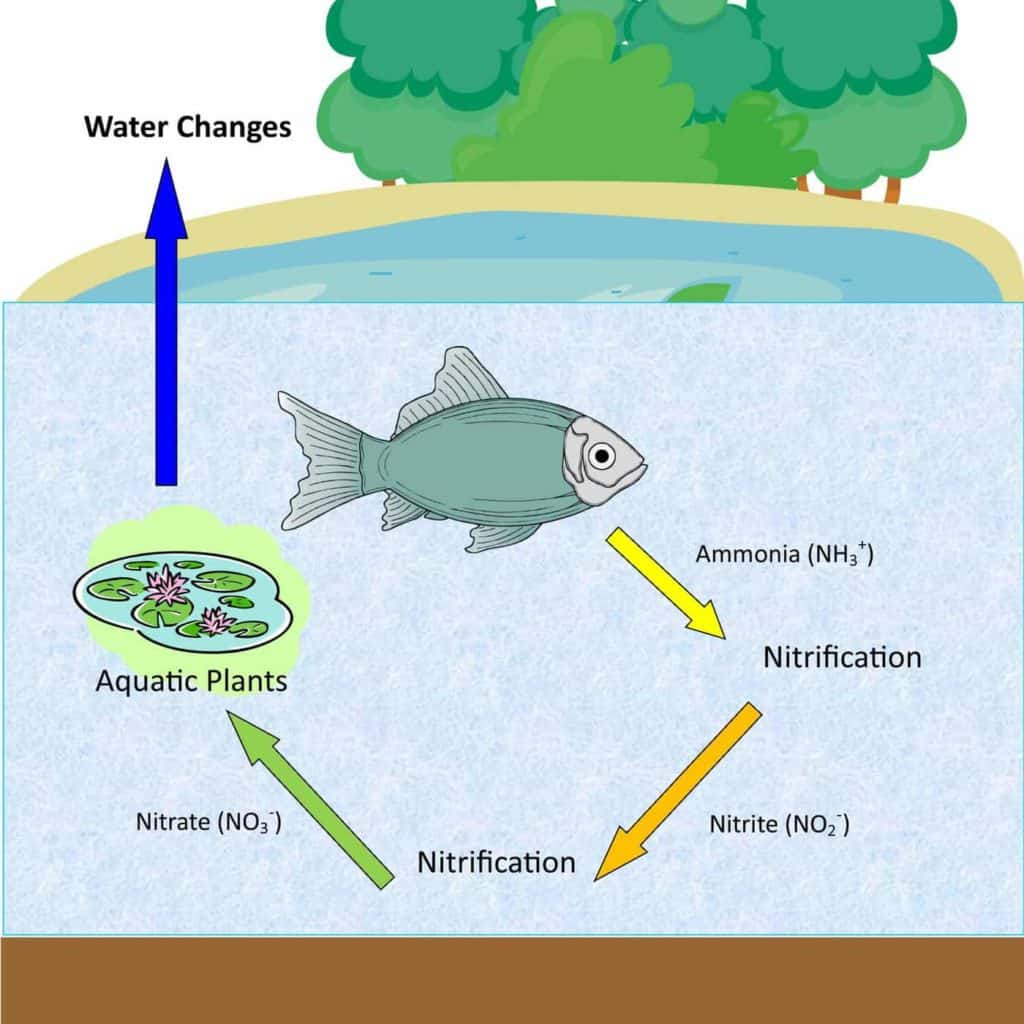You have a plan, you got your tank and all the additional items, so it’s time to add the fish! But how many fish do you add? In what order do you add them? How do you avoid fish tank overstocking before your filter is established or “cycled?” In the beginning, your biggest hurdle will be establishing your nitrogen cycle. This cycle is made up of commensal bacteria living in your substrate and biological filtration media (sponges, matting, bio balls, ceramic cubes etc). These helpful bacteria convert the primary fish waste of ammonia into nitrite and from there into nitrate. Ammonia and nitrite are highly toxic to fish, and can cause lethargy, loss of appetite and death.
When a tank is brand new, the bacteria have not been colonized. There are many commercial starters promising to “instantly start” your tank, but they are the aquatic equivalent to snake oil. Our office tested over half a dozen of these products with no decrease in time to conversion. You do NOT need to add these products to your tank, they will come with the fish; they just take time to become established. It will take 4-6 weeks for your tank to go through all the necessary steps to become established. If you follow your tank’s progression with your water quality testing kit, you will yield a graph like this:

You will see spikes in ammonia, nitrite and then nitrate. When you see this DO NOT PANIC. It is a normal occurrence in EVERY new fish tank. It is called “New Tank Syndrome” and there is no way around it unless you have another established tank with similar water parameter requirements that you can steal some filter media from.
How do I prevent fish tank overstocking?
The best way to combat New Tank Syndrome and avoid crashing your tank with a major ammonia spike is by starting with just a few fish in your new tank. Start with one or two goldfish or 3-4 tropicals, like zebrafish or tetras, before your tank is established. Slowly increase your fish levels from there and you will never have an issue.
Be patient! It is extra work, but I guarantee by following these steps, you will not lose a fish from New Tank Syndrome. Buy a test kit, know how to use it and don’t panic when those spikes hit. By having fewer fish in a larger volume of water, you will produce a smaller, more tolerable spike, keeping your fish alive.
Mistake #8 – Worrying Too Much About Algae
Mistake #10 – Lack of Planning


Can you explain what the water quality should be expected to be like? My water got extremely cloud when my ammonia was at a 2.0, my local shop told me to go ahead an do a 10% change since we are doing a fishless cycle by now my ammonia at 0.5 again.
I am a little unclear as to what your question is. If you are doing a fishless cycle, doing a water change to remove the ammonia would hinder your cycling process. You need a high level of ammonia in order to start cycling your tank.
Right I get that, nowhere have I read or heard about what the water should look like. Our water got extremely murky but not green. It would just be nice to know what to expect with the water quality as well, I’m learning obviously it’s not going to be cristal clear but how murky/cloudy is it going to get?
Water with a high ammonia contact will look very murky. It can be a little disconcerting to see. When your nitrogen cycle is establishing without fish, it is very common for the water to be very murky for up to a week or more, depending on your temperature. Once the ammonia starts converting to nitrite, the murkiness with dissipate.
Pingback: Fish For Outdoor Ponds – Aquatic Veterinary Services
Hai ,
Me suffering from betta fish 🐟 lose in my Tanks . I grow 500 betta ( sub adult stage- in 1250 L soft water ) & start bottling from the tank directly finding issues ( internal parasite infection) & resulting in massive loses. Can you guide me on this. Mine water parameters are at par with the standards .
Regards,
For veterinary assistance, please visit https://fishvets.org or https://wavma.org if you are outside California/Nevada.